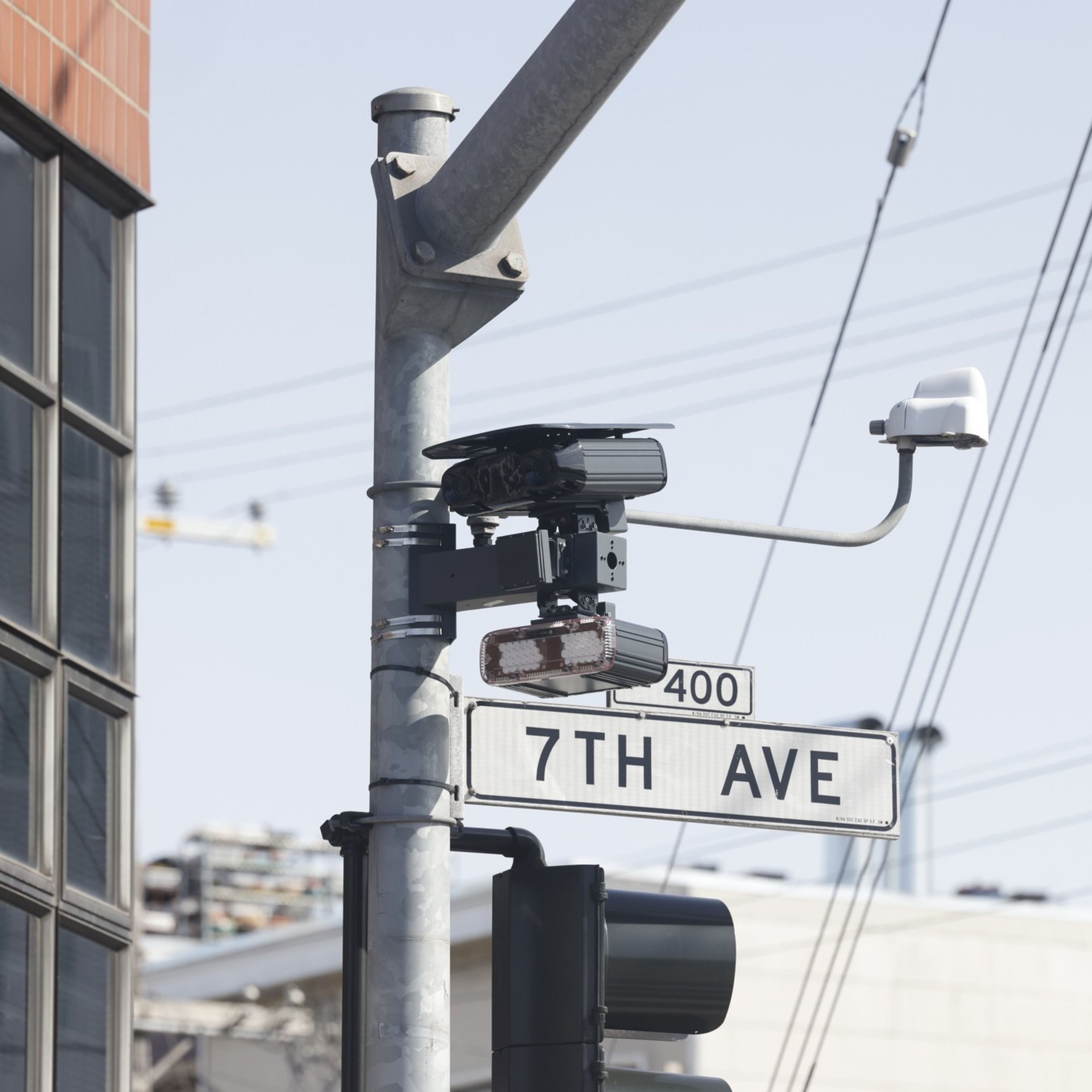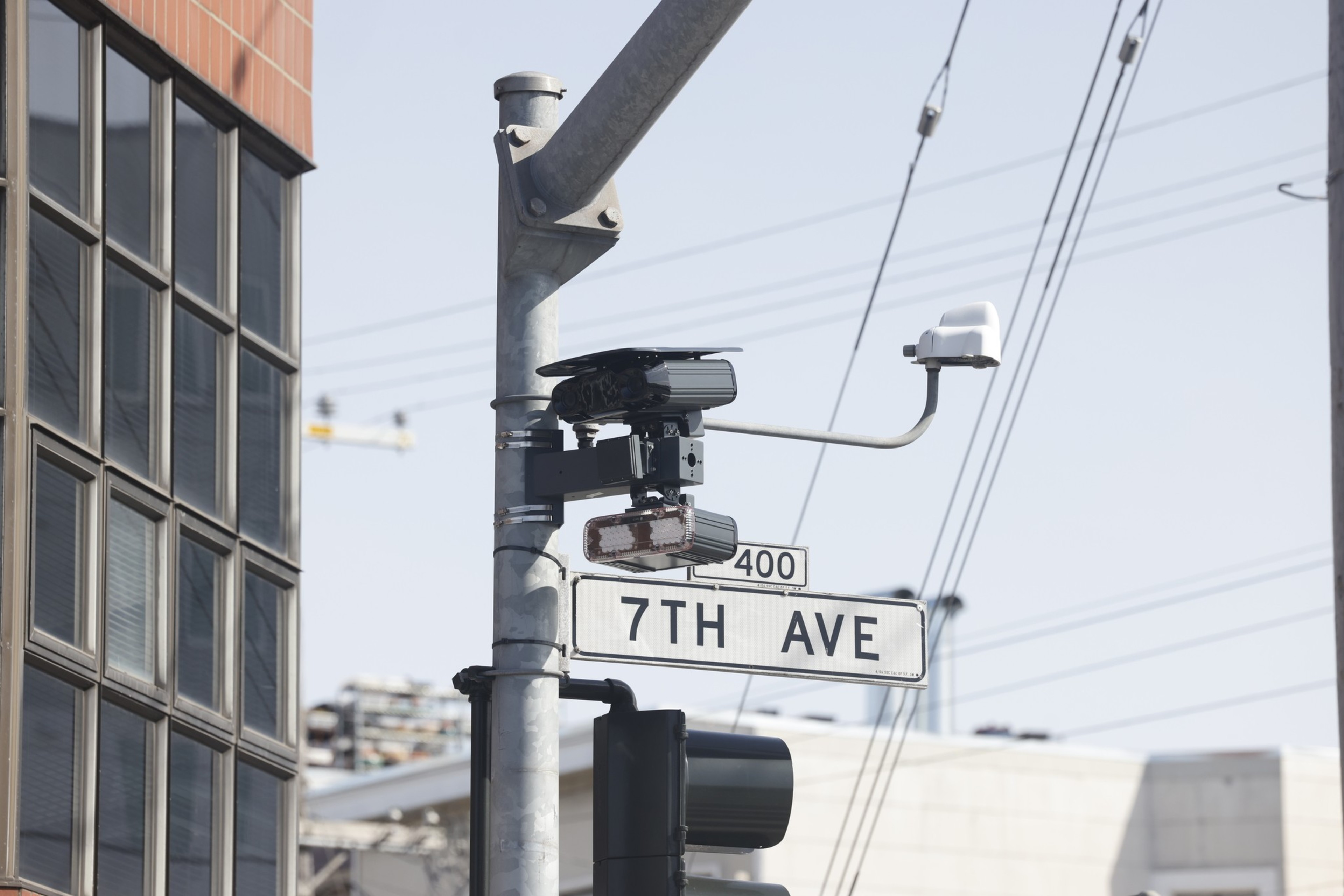San Francisco’s first-in-state network of speed cameras has drastically reduced speeding. At least, that’s what initial results show about the 56 cameras installed this year at 33 dangerous intersections throughout the city.
San Francisco Municipal Transportation Agency staff counted speeding vehicles at 15 locations between December 2023 and January 2025, before cameras went up. A second round of counts was conducted in September 2025, after cameras had been in place for several months.
At Fulton and Second Avenue just north of Golden Gate Park in the Richmond, the number of daily speeding violations fell by half, from an average of 1,000 in April to 500 in May, according to SFMTA data (opens in new tab). At San Jose Avenue between 29th and 30th streets, which bisects Noe Valley and Bernal Heights, speeding violations plummeted from 200 a day in May to 100 a day in June.
So drivers are easing off their gas pedals — and are also less likely to speed through a camera-equipped corridor again, according to SFMTA spokesperson Parisa Safarzadeh.
“Repeat offenders are less common,” she told The Standard. “So far, two-thirds of vehicles that have received a violation warning or citation have not received a second.”
The sharp drop in speeding along problem corridors comes on the heels of the city’s failure to end traffic deaths by 2024, the key goal of its Vision Zero campaign. In 2024, the deadliest of the last 14 years, 42 people were killed (opens in new tab) while walking, cycling, or inside vehicles. As of August 2025, 18 had died (opens in new tab), down from 24 last August.
The results of San Francisco’s camera network hold implications for a handful of other Golden State cities working to launch their own programs. And the city’s role as a testing ground could become a model if Sacramento allows the tech to be implemented across the state, where more than 21,000 people are killed or seriously injured in traffic collisions each year.
San Francisco’s network of 56 speed cameras went live March 20. From then until Aug. 5, the city issued roughly 350,000 warnings (opens in new tab) to speeding drivers. In August, the city issued 16,555 citations, which are sent to those caught driving more than 10 miles per hour above the speed limit.
Revenue from citations doesn’t go to city coffers but is used to maintain (opens in new tab) the camera network.
“This is an effort to change driving behavior, not issue tickets,” Safarzadeh said.
Traffic deaths have outraged urban mobility activists. Champion cyclist Ethan Boyes was killed in a 2023 DUI crash in the Presidio, and a family of four was killed (opens in new tab) by a speeding SUV as they waited at a bus stop in West Portal.
Since speeding is a key factor in roughly a third of all fatal crashes, safety experts and community advocates say getting drivers to slow down is vital to reducing collisions and saving lives.
For Luke Bornheimer, executive director of the nonprofit safety organization Streets Forward (opens in new tab), the data is “encouraging” and demonstrates that the tech is effective at compelling drivers to slow down to avoid a ticket.
“That said, there is little data to suggest that speed cameras decrease speeds much beyond the individual block where a camera is installed,” he told The Standard, adding that city leaders should not rely solely on the cameras to make progress on safety and public space goals.
“Given that the city is limited to 33 speed cameras for at least five years, Mayor [Daniel] Lurie, the Board of Supervisors, and SFMTA should focus on making it safer and faster to walk, bike and take public transit by installing protected bike lanes and transit-only lanes,” Bornheimer said.
The tech is (slowly) making its way to a handful of California cities following a 2023 state law allowing limited pilot programs in SF, Oakland, San Jose, Los Angeles, Long Beach, and Glendale.
So far, only San Francisco has cameras snapping and citing speeding drivers. Elsewhere:
- San Jose’s installations were slated for this summer, but officials now say “as soon as fall 2025.”
- Oakland says it’s “in the process of implementing up to 18 speed safety camera systems,” expected in this fall or winter.
- Los Angeles’ program to curb speeding drivers is moving much slower. Cameras aren’t expected until mid-2026.
- Glendale and Long Beach have timelines TBD. Glendale officials have stated that cameras “will be calibrated and tested (opens in new tab)” in mid- to late 2025, then activated for a 60-day warning period (similar to SF’s) in late 2025.

